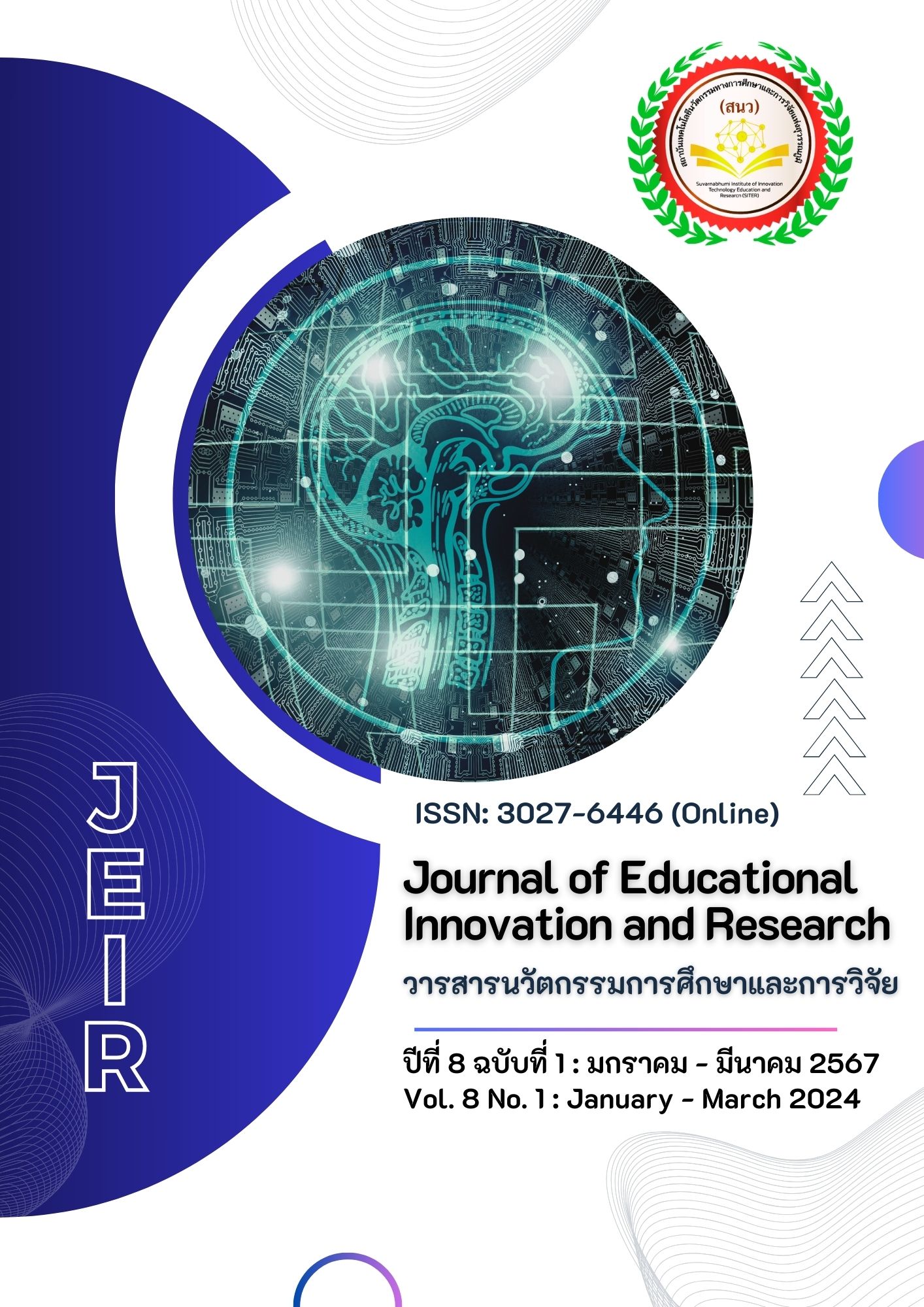Curriculum Assessment of Integrated Research-Based Learning Secondary school year 3 students at Anubanmanang School, Satun Education Service Area Office 1
Main Article Content
Abstract
The purpose of this research is to evaluate the integrated research project curriculum. Mathayom 3, Anuban Manang School, academic year 2021, in 4 areas, including 1) context, 2) preliminary factors, 3) process, and 4) output, using the CIPP Model, quantitative research format, the researcher selects groups. The purposive sample from the entire population consisted of 5 school committee members, 3 school administrators, 5 teachers in Mathayom 1-3, 26 Mathayom 3 students in the 2021 academic year, and parents of Mathayom 3 students in the academic year. 2021 10 people, total sample group 49 people
The research results found that the Evaluation of the integrated research project curriculum Mathayom 3, Manang Kindergarten School in 4 areas: 1) Context of educational institution administrators School committee members, and teachers are appropriate and consistent overall at a high level. 2) Factors of school administrators It was agreed that overall appropriateness and consistency were at the highest level, and the school committee, teachers, students, and parents agreed that overall appropriateness and consistency were at a high level. 3) Process aspect School administrators, teachers, and parents agreed that it was appropriate and consistent at the highest level overall. And 4) in terms of productivity, regarding the quality of students at the end of Mathayom 3, teachers agreed that it was appropriate and consistent at the highest level. Students saw that it was appropriate and consistent at a high level—results of the evaluation of the five important student competencies. Teachers and parents agreed that the student's overall scores were proficient. At the quality level, Level 3 (Able), students see that their key competencies are proficient. At the quality level, level 2 (in development), and in terms of desirable characteristics Teachers gave the overall rating at a good level. Students and parents agreed that the overall rating was excellent regarding the academic achievement of Mathayom 3 students at Manang Kindergarten School. Most received a grade of 3 or higher, with an overall academic performance of 100 percent, higher than the required criteria of 70 percent.
Article Details

This work is licensed under a Creative Commons Attribution-NonCommercial-NoDerivatives 4.0 International License.
References
Board of Basic Education. (2021). Guidelines for teaching and learning management. Bangkok: Office of the Education Commissionbasic.
Chuka, C. (2008). Curriculum Development. Bangkok: QP.
Educational Testing Bureau. (2021). Guidelines for classroom measurement and evaluation in the epidemic situation of coronavirus disease 2019. Bangkok.
Eisner, E.G. (1975). The Perceptive Eye: Toward the Reformation of Educational Evluation. Stanford, C.A: Stanford Evaluation Consortium.
Kunarak, K. (1997). Curriculum and development. Nakhon Pathom: Silpakorn University.
Ministry of Education. (2008). Basic Education Core Curriculum 2008. Bangkok: Teachers Council of Ladprao.
Ministry of Education. (2017). National Education Plan B.E. 2560-2036. Bangkok: Office of the Education Council Secretariat.
Ministry of Education. (2019). Working with integration Organize a linking course Ready to drive educational innovation areas. Bangkok: Bangkok Business.
Niphan, M. (2010). Assessment of courses that emphasize decision-making using a systematic approach using the CIPP model, Graduate Program Assessment Manual [Master’s Thesis, Silpakorn University].
Pichet Benchamas. (2017). Research Base Project Guide "Prolonging the King's Science Developing Learning for the 21st Century Center Project Learning the research base project. Satun: Satun Kindergarten.
Provus, M. (1971). Discrepancy Evaluation for Educational Program Improvement and Assessment. California: McCutchan Publishing.
Stake, Robert E.S. (1973). The Countenance of Educational Evaluation. Boston: Allyn and Bacon, Inc.
Stufflebeam, D.L. (1971). Educatlonal Evaluation and Declsion Marking ltasca. Illinois: Peacock.
Supap, S. (2022). A 21st Century Curriculum Assessment Model developed from the CIPP Model. Journal of Education Burapha,33(1), 1-14.
Tyler, R. W. (1949). Basic Principle of Curriculum and Instruction. Chicago: University of Chicago Press.


